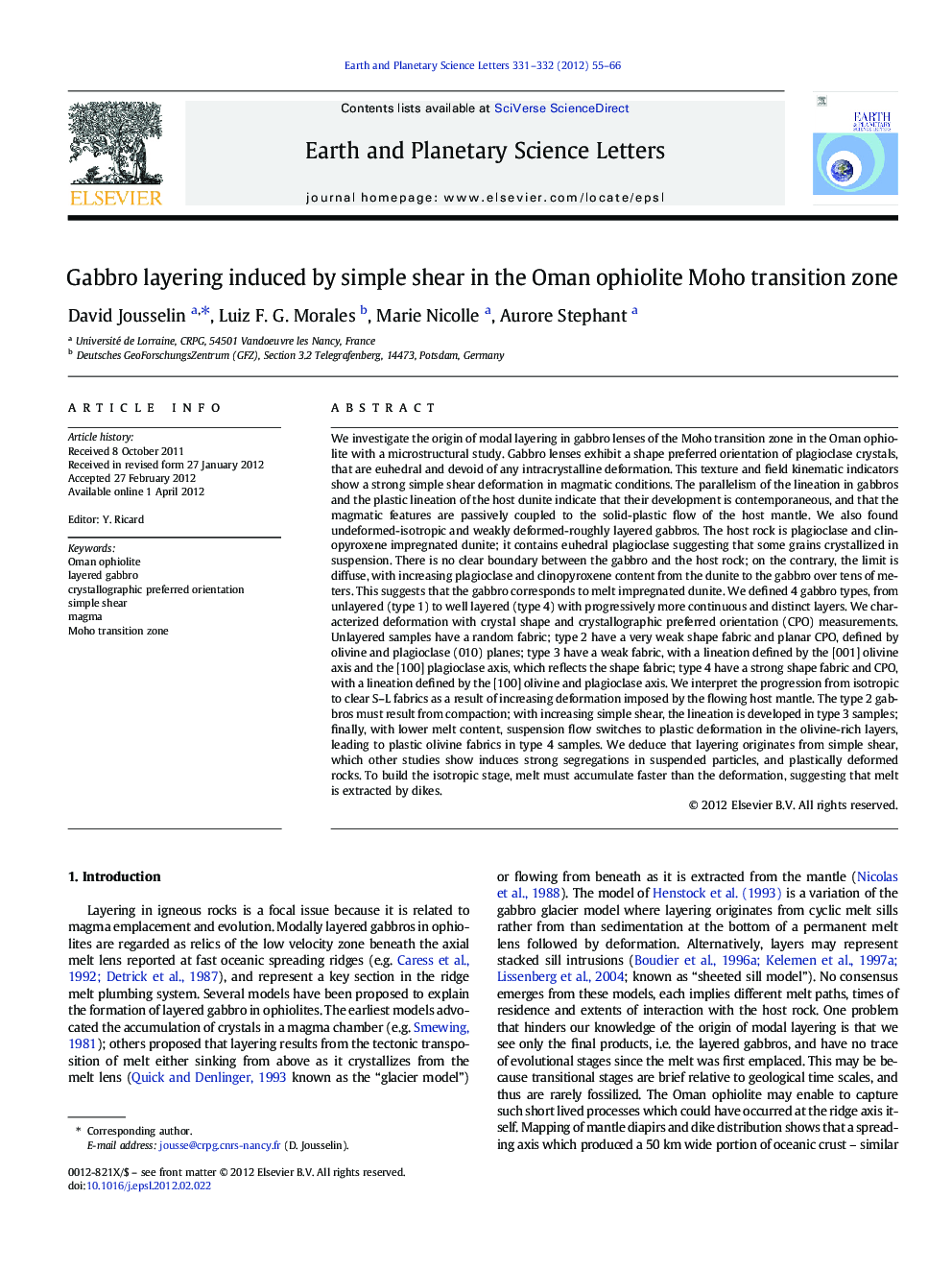| کد مقاله | کد نشریه | سال انتشار | مقاله انگلیسی | نسخه تمام متن |
|---|---|---|---|---|
| 4677471 | 1634805 | 2012 | 12 صفحه PDF | دانلود رایگان |

We investigate the origin of modal layering in gabbro lenses of the Moho transition zone in the Oman ophiolite with a microstructural study. Gabbro lenses exhibit a shape preferred orientation of plagioclase crystals, that are euhedral and devoid of any intracrystalline deformation. This texture and field kinematic indicators show a strong simple shear deformation in magmatic conditions. The parallelism of the lineation in gabbros and the plastic lineation of the host dunite indicate that their development is contemporaneous, and that the magmatic features are passively coupled to the solid-plastic flow of the host mantle. We also found undeformed-isotropic and weakly deformed-roughly layered gabbros. The host rock is plagioclase and clinopyroxene impregnated dunite; it contains euhedral plagioclase suggesting that some grains crystallized in suspension. There is no clear boundary between the gabbro and the host rock; on the contrary, the limit is diffuse, with increasing plagioclase and clinopyroxene content from the dunite to the gabbro over tens of meters. This suggests that the gabbro corresponds to melt impregnated dunite. We defined 4 gabbro types, from unlayered (type 1) to well layered (type 4) with progressively more continuous and distinct layers. We characterized deformation with crystal shape and crystallographic preferred orientation (CPO) measurements. Unlayered samples have a random fabric; type 2 have a very weak shape fabric and planar CPO, defined by olivine and plagioclase (010) planes; type 3 have a weak fabric, with a lineation defined by the [001] olivine axis and the [100] plagioclase axis, which reflects the shape fabric; type 4 have a strong shape fabric and CPO, with a lineation defined by the [100] olivine and plagioclase axis. We interpret the progression from isotropic to clear S–L fabrics as a result of increasing deformation imposed by the flowing host mantle. The type 2 gabbros must result from compaction; with increasing simple shear, the lineation is developed in type 3 samples; finally, with lower melt content, suspension flow switches to plastic deformation in the olivine-rich layers, leading to plastic olivine fabrics in type 4 samples. We deduce that layering originates from simple shear, which other studies show induces strong segregations in suspended particles, and plastically deformed rocks. To build the isotropic stage, melt must accumulate faster than the deformation, suggesting that melt is extracted by dikes.
Figure optionsDownload high-quality image (864 K)Download as PowerPoint slideHighlights
► Melt impregnation forms isotropic gabbro in the Oman ophiolite Moho transition zone.
► We measured crystallographic fabric for transition from isotropic to layered gabbro.
► Olivine fabric evolves from planar to [001] (010)-magmatic to [100] (010)-HTplastic.
► We deduce that gabbro layering originates from shear caused by host mantle flow.
► Isotropic stage means melt collected faster than shear rate, thus extracted by dikes.
Journal: Earth and Planetary Science Letters - Volumes 331–332, 15 May 2012, Pages 55–66